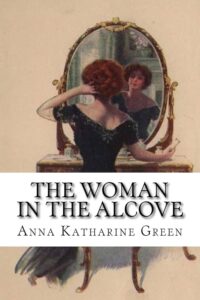The Woman in the Alcove
III -The woman in the Alcove
byIn Chapter III of “The Woman in the Alcove,” the protagonist is engulfed in a whirl of despair and confusion as the illustrious diamond, central to a crime, is discovered concealed within her possessions. She vehemently denies any involvement, asserting her ignorance of how the jewel and the gloves, in which it was hidden, came to be in her bag. The kindly inspector, while expressing belief in her innocence, hints at a man’s involvement, leading her to staunchly defend Anson Durand’s integrity, suggesting someone else’s guilt.
In a poignant scene, Durand’s arrival brings tensions to the surface. He is visibly disturbed by the implications of his actions, admitting to hiding the gloves in her bag out of a misguided attempt to protect her from the fallout of the crime, fearing undue suspicion due to his brief interaction with the victim, Mrs. Fairbrother. His acknowledgment does little to clear the air, as it raises more questions about his motives and the veracity of his account.
The chapter then delves into an investigative turn where the protagonist, through a detailed recounting of a reflection she saw in a window – a man in a dread-filled moment – provides a pivotal lead. This reflection, theorized to be cast from a series of reflective surfaces, points to a passageway not previously considered. The inspector’s interest peaks, leading to a reenactment in the deserted supper-room that confirms her account. This discovery redirects the investigation towards identifying the man seen in the reflection, whose fearful demeanor suggests guilt.
Amidst this turmoil, a detail about Durand’s appearance – his prematurely donned handkerchief – becomes a focal point of suspicion. The inspector’s request for Durand to reveal his shirt-front, presumably to check for signs of guilt or involvement in the murder, results in a significant moment. Durand’s compliance reveals a resignation to the consequences of his earlier decisions, hinting at further complexities in his relationship with the crime and deepening the mystery surrounding the murder of Mrs. Fairbrother.
Through intricate narratives of personal loyalty, investigative deduction, and the interplay of innocence and accusation, this chapter of “The Woman in the Alcove” weaves a rich tapestry of suspense and human emotion, portraying the protagonist’s unwavering determination to prove Durand’s innocence amidst an increasingly complex web of evidence and suspicion.



0 Comments